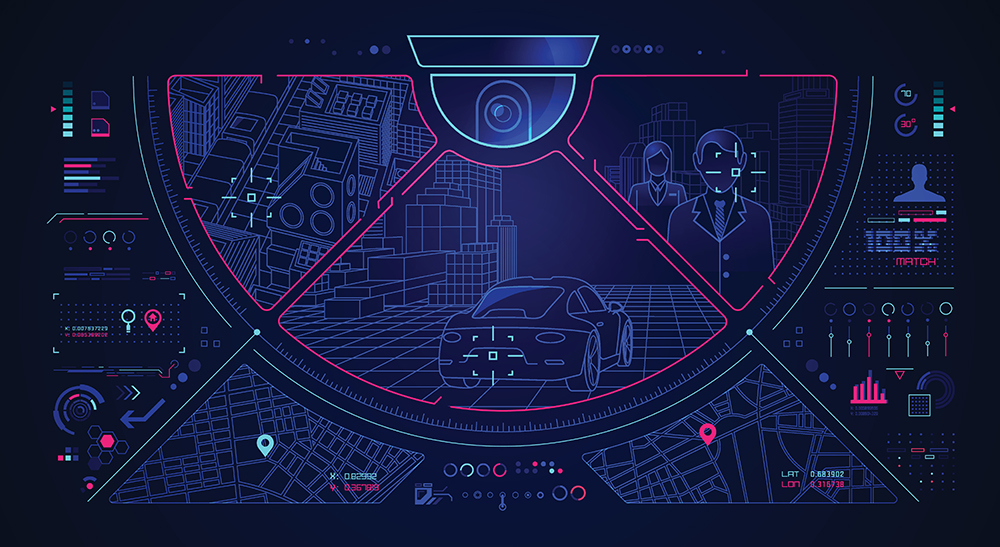Transform Existing Video Surveillance Infrastructure into Business Intelligence Generators

How to Mine Big Data from Raw Video
Organizations in many industries are turning to business intelligence solutions to make their organizations more efficient, effective, and productive, as well as empowering them to make data-driven decisions. Business intelligence is founded on Big Data, which is derived from a combination of structured and unstructured datasets from several real-time or historic sources. One source of Big Data is video surveillance footage; after all, each camera in a CCTV network gathers a plethora of information that could be mined for business intelligence.
To derive insights from their existing video surveillance infrastructure, organizations can implement video content analytics software, which processes raw video from video surveillance (CCTV) networks, and identifies and classifies objects in the footage (such as people, vehicles, and other items). It then indexes those objects so that analytics operators can quickly and easily search, filter and alert on video.
Surveillance technology is often thought of as primarily a tool for security or law enforcement teams; for example, police officers use it to review video and accelerate investigations. But this blog post explains ways that organizations across industries — from law enforcement to higher education, hospitality and entertainment, retail, transportation, and urban planning — can harness Big Data from their video surveillance footage, and turn that data into actionable business intelligence.
Trend data is essential
Certainly, video content analysis traditionally has been used to enhance response times, or investigate incidents, but it also is used to research patterns of usage and behavior over time. Comprehensive video content analysis technology collects and aggregates data, such as traffic (bicycle, pedestrian, or vehicle) volume and patterns, occupancy statistics, dwell times, and visitor/customer preferences and tendencies. In this way users can uncover quantitative data about trends, patterns and normative conditions; with that statistical trend data, operators can benchmark what is normal and define anomalous behavior or situations. For example, retailers may use video content analysis to measure activity at checkout queues, understand the expected traffic norms, and then configure smart, real-time alerts to detect anomalies. By increasing situational awareness with alerts, retailers can make intelligent decisions to changes in the environment, whether it’s deploying additional staff, as necessary, or redirect shoppers to other pay stations.
Dashboard reports deliver business intelligence
Big Data can be difficult to manage and utilize unless it’s delivered in a format that is easy to understand, analyze, and apply. That’s why a comprehensive video intelligence software takes the aggregated data and presents it in easy-to-use dashboards with reports that include graphs, heatmaps, and charts. These dashboards empower users to uncover quantifiable data and trends so they can better understand constituent/customer behavior.
When management teams are equipped with such information, they are better able to plan strategically. Depending on their goals and mission, organizations can use that business intelligence to improve guest services, optimize customer service, reduce accidents, or increase profits. For example, stadium managers can track crowd size and movement patterns, to ensure that the stadium has adequate staffing and facilities during peak events; police officers can identify crime hotspots; retailers can map customer paths to design more profitable floor plans and understand their audience demographics, property managers can quantify foot and vehicle path traffic to uncover optimal locations for retail kiosks or stores; urban planners can observe crowding and traffic hotspots to plan better bicycle paths, sidewalks, and vehicle roadways for Smart Cities; and university administrators can track employee and student compliance with campus health safety regulations, such as physical distancing and face mask wearing.
Furthermore, with comprehensive video intelligence, dashboards can be integrated with other third-party data applications, such as Point of Sale, Time Management, and Access Control systems, to gain a more complete overview of a site or property. For instance, a home improvement store may correlate the number of visitors in a store, with dwell times in a particular part of the store, and compare that data with daily sales revenue.
Video footage contains valuable, often untapped, information about customers, residents, and behavior patterns. By harnessing that data with video content analytic software, professionals across many industries have a way to gather Big Data and convert it into actionable business intelligence that can be applied across various internal business groups in an organization, such as planning, marketing, security, and operations. This represents an important way for organizations to get more value out of their existing investments in video surveillance.
Signup to receive a monthly blog digest.
